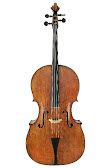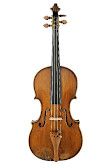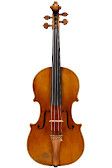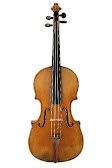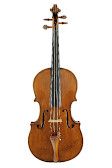Giovanni Battista Guadagnini
1711–1786Guadagnini was born in Bilegno and moved to Piacenza in 1738, where he apprenticed as a woodworker. His interest in violinmaking was awakened by the Ferrari brothers – violinist Paolo and cellist Carlo. There is no evidence of violinmakers in Piacenza prior to 1740, so it is unclear where Guadagnini learned the trade. He was successful nevertheless, which allowed him to rent a presentable house with a workshop across from Piacenza Cathedral in 1746. When Carlo Ferrari moved to Milan, Guadagnini followed suit in 1749. The active music scene in Milan offered the luthier better business conditions, and the next decade ranks among his most productive periods. Several labels suggest that Guadagnini worked in Cremona for a short period in 1758, but the records do not back this up. The Guadagnini family, which had grown quite large by then, moved house to Parma in 1758, where the violinmaker succeeded in establishing a good relationship with the court. Don Filippo, the Duke of Parma, played several instruments, and his court awarded Guadagnini an allowance in 1766. Additionally, the maker was able to obtain a temporary ban on imports of violins from Trento. However, on the duke’s demise, the political circumstances changed, and one of Guadagnini’s patrons was dismissed after becoming entangled in intrigues. When the court stopped paying the allowance in 1771, Guadagnini moved to Turin. There, he became acquainted with collector and researcher Count Ignazio Alessandro Cozio de Salabue, who had dedicated his life to studying string instruments. In addition to owning a sizable collection of exceptional instruments, the count also possessed records, tools, and templates of several Cremonese masters, among them Stradivari. Access to these materials influenced Guadagnini’s last creative period. In the three-and-a-half years that followed, the count exclusively purchased all instruments Guadagnini built during that period – at least fifty violins, two violas, and two or three violoncellos. However, financial controversies ended the relationship around the year 1780. Four of Guadagnini’s sons were also skilled violinmakers, and they are likely to have been occupied in the workshop from 1771. After Guadagnini’s death, his oldest son, Gaetano (1750–1817), and Gaetano’s brother, Carlo (1768–1816), took over the workshop and continued to run it under the name “Fratelli Guadagnini” (Guadagnini brothers).

